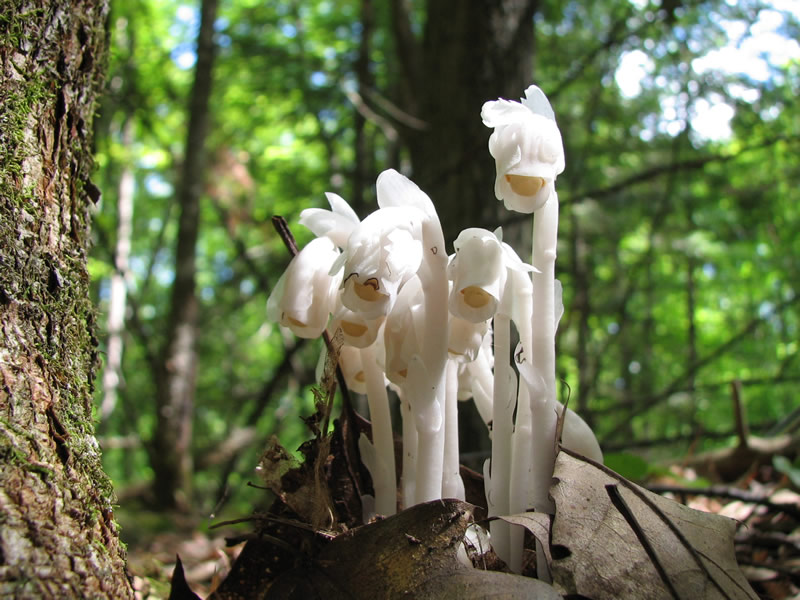
If you spend enough time in forest herbalism circles, you’ve probably seen ghost pipe. It’s a strange, pale, almost otherworldly plant that looks like it wandered out of a fairy tale. Known to botanists as Monotropa uniflora, it’s not green at all. It doesn’t photosynthesize. Instead, it taps into underground fungal networks for its nutrients, which already makes it one of the more mysterious plants out there.
Traditionally, ghost pipe has been used in small doses for things like pain, anxiety, and deep grief. It’s rare in the wild, so harvesting was done carefully, often with a lot of reverence.
But a new Penn State study says something has shifted. Ghost pipe is having a comeback, and social media — especially TikTok — is a big part of it. People are now using it in tinctures for everything from sleep problems to opioid withdrawal, often without much understanding of dosing, potential risks, or ecological impact.
That raises two concerns. First, safety. There’s not a lot of modern clinical data on ghost pipe, and “natural” doesn’t automatically mean harmless. Second, sustainability. Ghost pipe is not a plant you can easily cultivate in a garden. Overharvesting could wipe out local populations before we’ve even learned what it’s truly capable of.
It’s a perfect example of how fast traditions can change once the internet gets involved. The plant’s symbolism — a spectral presence in the forest, associated with calm and stillness — has been traded for rapid, high-visibility exposure. And while it’s exciting to see interest in forest medicine growing, the pace leaves little room for the kind of careful stewardship this species needs.
If ghost pipe is going to have a place in the modern herbal toolkit, we’ll need to bring the old ways and new enthusiasm together — blending respect for the plant’s ecology with curiosity about its chemistry. Otherwise, this ghost may disappear again, and next time, it might not come back.
